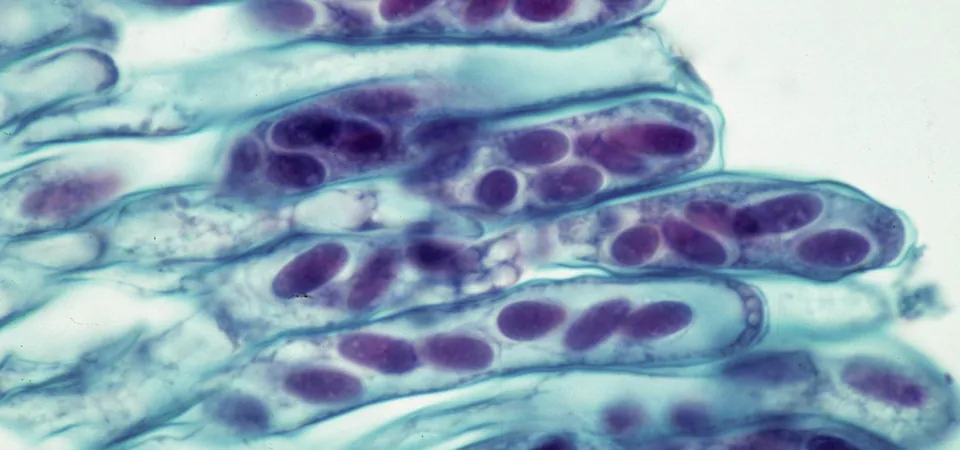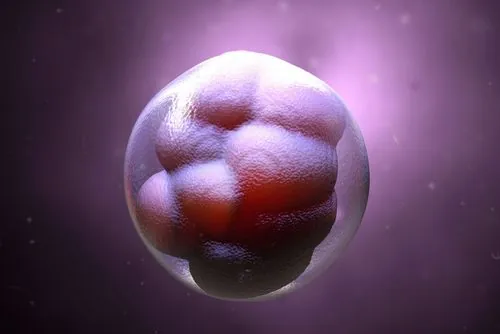
Unraveling the Mystery of Prototaxites: The 26-Foot-Tall Giant That Challenges Our Understanding of Life
2025-04-07
Author: Charlotte
Paleobiologists have long been captivated by the staggering mystery of Prototaxites.
Prototaxites is a colossal organism that towered over the barren landscapes of Earth between 440 and 360 million years ago. This enigmatic organism has puzzled scientists for nearly two centuries, as fossil remains showcase a structure that defies easy classification.
The Enigmatic Discovery
The narrative of Prototaxites began in 1843 when paleontologists unearthed massive, cylindrical fossils along the ancient riverbanks of Gaspé Bay in Quebec, Canada. These impressive trunks sparked intense debates among scientists, with early interpretations by renowned paleontologist John William Dawson labeling them as the remains of decaying conifers.
However, as further examinations were conducted, it became evident that their complex structure pointed to an alternative origin.
Prototaxites boasted a unique internal architecture consisting of an interwoven network of narrow tubes, a feature indicating a more intricate form of life than previously thought.
Its imposing height—reaching up to 26 feet and stretching nearly a meter wide—positions Prototaxites as a dominant force in Devonian ecosystems, outpacing contemporaneous flora such as Cooksonia.
A Fungal Identity? Not Quite!
For much of the 20th century, scientists largely viewed Prototaxites as a colossal fungus, solidified by early microscopic examinations and analyses revealing carbon isotope ratios characteristic of heterotrophic fungi.
However, this classification faced backlash due to the absence of key biochemical markers found universally in fungi, such as chitin in their cell walls.
Repeated attempts at classification have underscored the complexity of Prototaxites, pushing researchers to explore whether it could represent a giant lichen or an entirely unique lineage of life altogether.
Breakthroughs in Understanding: Prototaxites taiti
Recently, researchers from the University of Edinburgh made groundbreaking strides in understanding this fascinating organism by focusing on a species identified as Prototaxites taiti.
Their investigations utilized exquisitely preserved specimens from the renowned Rhynie chert, a deposit notable for yielding high-quality fossils from the early Devonian period.
Through state-of-the-art imaging techniques and advanced machine learning algorithms, the team uncovered startling insights.
The internal structural elements of P. taiti revealed tube structures with unique characteristics that strongly deviated from any fungal reproductive or structural elements we are familiar with today.
The absence of chitin coupled with the discovery of enigmatic lignin-like compounds propelled scientists to assert that this wonder of nature could not be appropriately categorized within any known eukaryotic lineage—neither fungi, plants, nor animals.
A Glimpse into a Lost World
What does this all mean? It appears that Prototaxites was not a mere aberration but rather a trailblazer of a unique multicellular life form that thrived before fading into obscurity without leaving a trace in our modern ecological tapestry.
This revelation raises important questions about the diversity of life that once existed on our planet and challenges our current understanding of Earth's evolutionary history.
As Prototaxites stands as a testament to the complexities of our planet's biological past, it reminds us that many chapters of life's history remain unwritten.
The quest for knowledge is never-ending, and the allure of the unknown continues to ignite our curiosity about the past—and the secrets that might still be revealed.









 Brasil (PT)
Brasil (PT)
 Canada (EN)
Canada (EN)
 Chile (ES)
Chile (ES)
 Česko (CS)
Česko (CS)
 대한민국 (KO)
대한민국 (KO)
 España (ES)
España (ES)
 France (FR)
France (FR)
 Hong Kong (EN)
Hong Kong (EN)
 Italia (IT)
Italia (IT)
 日本 (JA)
日本 (JA)
 Magyarország (HU)
Magyarország (HU)
 Norge (NO)
Norge (NO)
 Polska (PL)
Polska (PL)
 Schweiz (DE)
Schweiz (DE)
 Singapore (EN)
Singapore (EN)
 Sverige (SV)
Sverige (SV)
 Suomi (FI)
Suomi (FI)
 Türkiye (TR)
Türkiye (TR)
 الإمارات العربية المتحدة (AR)
الإمارات العربية المتحدة (AR)